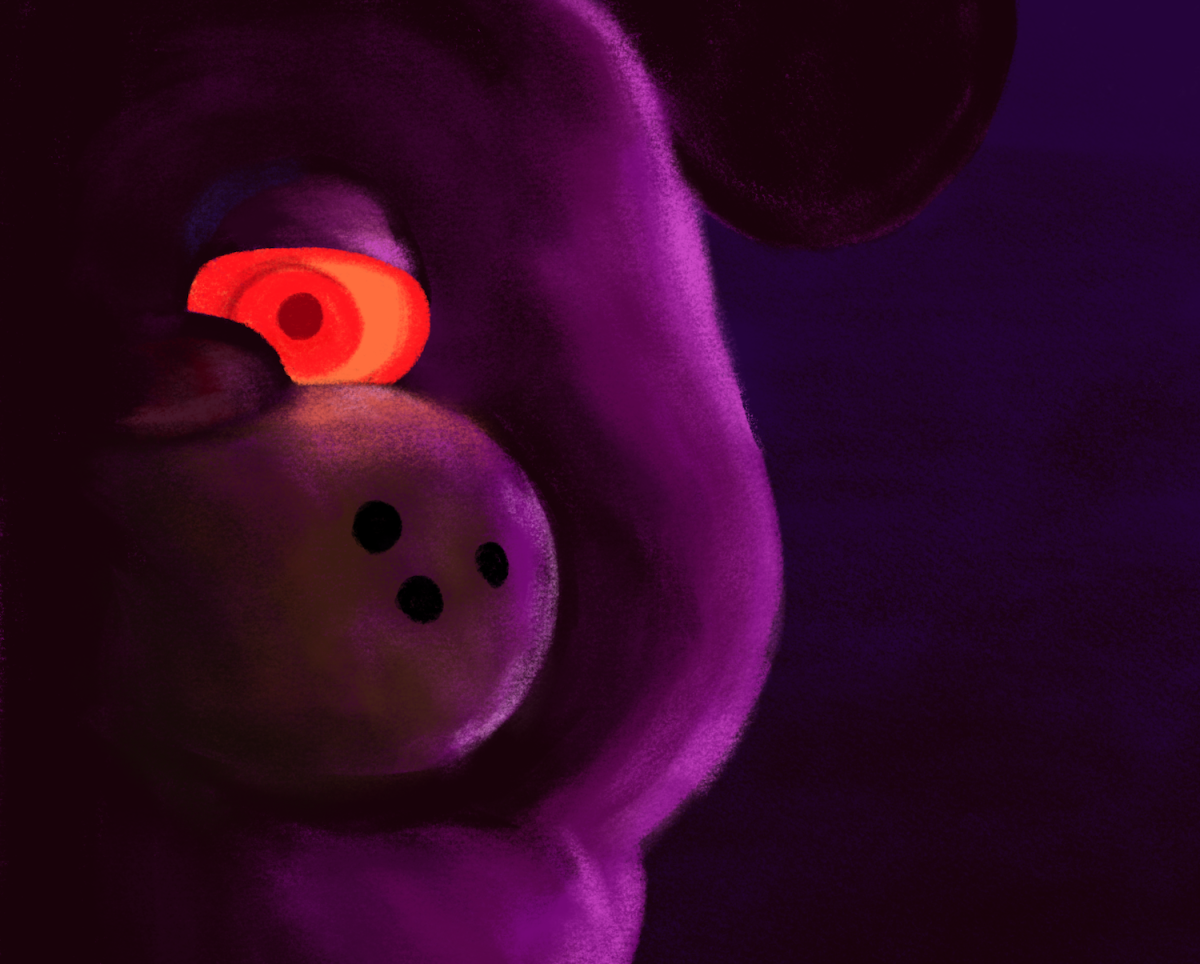Let’s be honest here — there’s a reason you’re buying tickets to “Five Nights at Freddy’s.” In part, you’re buying them out of sheer curiosity, and hilarious disbelief, over the decision to give a $25 million budget to a movie about killer animatronics possessed by dead children. But you’re also buying tickets because you’re hoping that the movie about our guilty-pleasure childhood horror game franchise will truly entertain us once again.
Well, there’s good news for you. “Five Nights at Freddy’s” completely understands what it is at its core: a nostalgic rollercoaster ride that is smart enough to not take itself too seriously. The film succeeds in giving us the same scares, laughs and fun that the games did when we were secretly watching our favorite YouTubers play them online a decade ago.
The film follows Mike Schmidt (Josh Hutcherson), a troubled security guard who gets a job at Freddy Fazbear’s Pizzeria, a restaurant chain popular in the ’80s for its singing animatronic mascots: Freddy Fazbear, Bonnie the Bunny, Chica the Chicken and Foxy the Pirate Fox. Strange things begin to happen as Mike starts his night shift at the now run-down restaurant that appears abandoned. He is informed by a mysterious police officer Vanessa Monroe (Elizabeth Lail) that five children were brutally murdered and that their bodies were never found. Mike’s nightmares intensify each night as the animatronics seem to move on their own will. But when Mike is forced to bring his elementary school sister to work, he realizes that Freddy Fazbear’s Pizzeria might not be abandoned after all.
For those unfamiliar with “FNaF” in its original form, it is a video game and media franchise started in 2014 by game developer Scott Cawthon. Cawthon actually financed the entire first game himself, after crowd-funding garnered a staggering $0 on Kickstarter.
Upon its initial release, the game gained a wide following among kids and teenagers for its trauma-inducing character design, unpredictable gameplay and jolting jumpscares that literally screamed in your face. Gameplay videos from YouTubers like “Markiplier” helped to boost the popularity of the franchise, especially for those who couldn’t get their parents to buy the game for them.
Apart from the survival aspect of the game, the game’s overly intricate lore about the pizzeria’s haunting past, which spreads out through a span of multiple games, novels, comic books and ambient music albums, has also gained a cult following on the internet. The game contains keystone clues in dark corners, or quick cuts that require a sharp eye. The many easter eggs sprinkled throughout the series were carefully scrutinized by gamers and YouTubers, such as “MatPat” from the channel “The Game Theorists,” with whom Cawthon collaborated with on later games.
The “Five Nights at Freddy’s” film completely acknowledges the silliness of its premise. But if you consider the fact that the audience is not necessarily expecting a narrative masterpiece with twists and turns at every corner, you can realize the script does succeed at making us invested in the characters. The movie dedicates significant screen time to Mike Schmidt’s traumatic childhood, creating a strong back story that works as the structural spine of the narrative. While “Five Nights at Freddy’s” pulls every trick in the book of jump scares to frighten the audience, it also doesn’t forget to realize the eerie atmosphere of Freddy Fazbear’s Pizzeria in the games. An adequate mixture of horror and comedy expected in video games leaves no time for the audience to get bored throughout its runtime.
Original fans of the game franchise will rejoice at how accurately the animatronics and Freddy Fazbear’s pizzeria were recreated on screen. Even audience members who aren’t too familiar with the source material will be able to fall into the nostalgia of mid-2010s internet culture of memes and YouTubers. Elements like Foxy’s corridor run and even the jump scares are carefully crafted to resemble the game. The production and character design transports audiences back to that creepy old pizzeria from our childhood, where they had to skillfully block the security doors from the screaming uncanny animatronics. One of the most impressive sequences in the film features the gameplay’s editing style, evident from the viewpoints of the multiple surveillance cameras with familiar angles — leaving the audience to desperately try and figure out which of the animatronics are charging towards the screen.
The movie’s story is a simplified version of the game’s convoluted plot, with familiar faces like “the purple guy” making an appearance every now and then. The film successfully utilizes nostalgia as its asset, with surprise cameos from your favorite childhood YouTubers being a cherry on top of this trip down memory lane. If you’ve ever watched a “Game Theory” video by MatPat or skimmed through the “FNaF” lore on Wikipedia as a kid, you may be surprised by how much you actually do remember about the game. The film has a plethora of easter eggs and references that you probably didn’t think you would recognize, from the opening title sequence visualized as the mini-games of the original franchise, to the iconic “phone guy” who gives out exposition in the first installment of the game.
While this film might be able to bring the original fans of the game back to the 2010s, it may not be as welcoming to an audience that has never even heard of “FNaF.” The horror aspect of the film largely depends on audiences’ childhood memories of being scared by these animatronics.
For a newcomer, “Five Nights at Freddy’s” might not be able to deliver any scares other than occasional over-the-top brutality unfit for its PG-13 rating. But, “Five Nights at Freddy’s” successfully takes the audience on a thrilling ride to their childhood, making them want more from the possible upcoming sequels. Yes, they may be making this into a trilogy.
Contact Tony Jaeyeong Jeong at [email protected].























































































































































